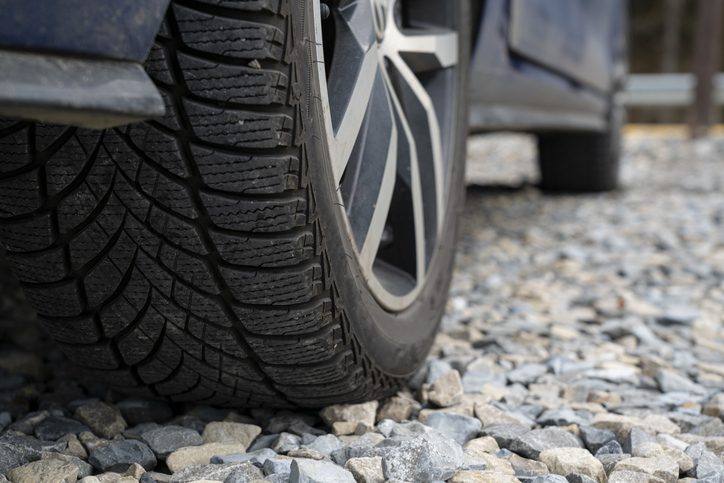Before you set off on the lake, river or ocean this season, it’s crucial to make sure your boat is in ship shape for summer.
Of course, you can pay a pro to prep your boat for the season, but doing all or most of the job yourself can save you money and help you become more familiar with your vessel.
First things first, though. Before you plan your first trip out onto the water, make sure you’ve got the proper boat insurance coverage in place. Verifying that your boat is fully covered, and your policy tailored to your boating habits, will give you peace of mind and protection on all your voyages.
Once you’re fully insured, get your boat ready for fun days on the water with family and friends. Here’s a step-by-step guide to prepping for a new season:
Dust Off the Manual
Each watercraft is different, so it’s key to find and consult the owner’s manual for yours as you go through the process of getting water ready.
Clean and Shine Your Vessel
Take the tarp off your boat and store it in a safe spot. Wash the craft thoroughly, inside and out. Scrub underneath carpets to get rid of mold on the interior. Check the hull and repair any blisters. Then wax the sides of your boat using marine past wax. For safety’s sake, avoid waxing the deck, which would make it slippery.
Get Your Motor Running
Take the time to complete all the steps necessary to get the engine on your boat ready to run. The steps you need to take will vary based on your specific boat and whether you have an inboard or outboard motor. In general:
- Do a visual inspection to make sure there are no chewed wires, droppings or other signs that critters took up residence over the winter.
- Inspect belts, hoses and wiring to make sure there’s no corrosion, cracking or leakage. Tighten hose clamps and fittings if necessary.
- Look over the wires, clean or change the terminals, and apply a spray corrosion inhibitor to lessen damage during the boating season.
- Following the instructions in the owner’s manual, remove, inspect and re-install spark plugs.
- Make any necessary repairs, including swapping out any zinc anodes that are corroded.
- Lubricate movable parts.
- Check cooling water impellers and replace if necessary.
If you’re not sure if you can perform any of these steps, don’t hesitate to call in a pro for certain tasks.
Change or Flush Your Fluids
You probably dealt with fluids before stowing the vessel for the winter. However, before taking to the water, it’s important to double check oil and coolant levels.
Test Your Electrical Systems
Do a visual inspection of boat electrical systems, making sure all wires and components appear to be in good condition. Flip switches to verify that they work, and also replace any burned out bulbs.
Boost Your Batteries
Do a routine boat battery inspection. First, check the exteriors of the battery cases for cracks or damage. Inspect the terminals, cleaning off any corrosion with a wire brush. For lead acid batteries, look at fluid levels and add distilled water. Use a voltage meter to make sure batteries are fully charged.
Make Sure Your Trailer Works Well
Inflate the tires on your trailer to their proper pressure and verify that they have plenty of tread left. Make sure the brakes and lights work properly. Check the cable or strap to make sure it’s sturdy and in good shape. Lubricate wheel bearings.
Get Up To Speed on Safe Boating
Before each new season, check the current boating rules and regulations in your state. Consider taking a boating safety class, which will help you brush up your safety skills and possibly earn you a discount on your insurance.
Do you need boat insurance? Request a quote from The Hartford today.
Make Sure Your Craft is Well Equipped
It’s crucial to make sure you have all the necessary boating safety equipment in good working order. Consider getting a free vessel safety check, a service provided to recreational boat owners by certified volunteers from the U.S. Coast Guard Auxiliary and the United States Power Squadrons. The examiner typically will meet you at your boat and check to make sure all the required safety equipment is onboard and in good working order. The U.S. Coast Guard requires that all recreational boats carry certain equipment, including personal flotation devices (PFDs), a fire extinguisher, a loud bell or whistle or both, and visual distress signals. Inspect PFDs and replace any with rips or other signs of wear. Check the expiration date on your fire extinguishers. And if your flares are close to expiring, get new ones but stash the old ones onboard for backup, Boat Trader advises. If you don’t have one, consider getting an emergency position indicating radio beacon, which can transmit your location for 48 hours in case of distress.
Test Your Safety Systems
Don’t wait until you’re on the water to discover whether your safety features are good to go. Take these steps before setting out:
- Blow your horn to make sure it works.
- Inspect the steering system to ensure that all cables or hydraulics are in good shape with no leaks or breaks.
- Verify that your VHF radio functions properly in case you need to call for help.
- Inspect your anchor line to make sure it’s in good shape and not in danger of breaking.
- Check bilge blowers and pumps, and make sure the strainers are free of debris. Maintain your seacocks for proper functioning, lubricate them and place them in the proper positions.
Steer Clear of Carbon Monoxide Dangers
Learn about the dangers of carbon monoxide on boats and take measures to protect you and your passengers. Install a carbon monoxide detector fit for marine use in any enclosed space on your boat and test it regularly. Make a mental note to keep yourself and passengers away from dangerous areas, such as the back of the boat and the dive platform, while the boat is running. Learn about the symptoms of CO poisoning and be alert for these signs when you’re on the water.
Make Sure Your Craft is Water Legal
Confirm that your registration is current and your validation decal is affixed to the side of the vessel.
Once you’ve taken these steps, you’re almost ready to take your boat for a spin.
Getting Ready for Your First Day of Fun in the Sun
Before you take your initial trip of the season, make sure you’ve got everything you need. First, make sure your boating license is tucked in a safe spot on the boat or in your wallet. Double and triple check to make 100 percent sure the drain plug on your boat is properly installed so your hopes for a great day don’t sink, along with your boat.
Then make sure your watercraft is well stocked for a safe, healthy day on the waves. That means bringing aboard boating supplies such as: water resistant high SPF sunscreen, insect spray, polarized sunglasses to protect your eyes from the glare on the water, sturdy slip-resistant shoes, towels, warm jackets, food and plenty of drinking water (always bring extra) so you don’t get dehydrated.
If you’re taking friends or family along for the ride, send them a list of supplies to bring as well so no one gets left high and dry without sunglasses or left shivering minus a jacket after the wind kicks up.
After starting your engine, wait a few minutes before setting out to make sure the boat is running properly.
And finally, enjoy your maiden voyage of the season and a long summer of smooth — and safe — sailing!







Don’t forget that in many states a boater’s safety card is required by anyone operating a motor vessel. You can general complete a course online or attend classes.
This would be the right blog for anybody who wishes to learn about this topic. You already know a great deal its practically not easy to argue with you (not too I personally would want…HaHa). You definitely put a brand new spin over a topic thats been written about for several years. Wonderful stuff, just great!
Thanks for sharing this information
Please communicate with phone or regular mail.
Hi Frank, we have confirmed that you will only be communicated through both phone and regular mail. Thanks!
You should post this in a way so it can be copied and posted to save it for future reference.
Hi Thomas, you can print this article as a reference. Please find the print button to the right of the article’s photo.